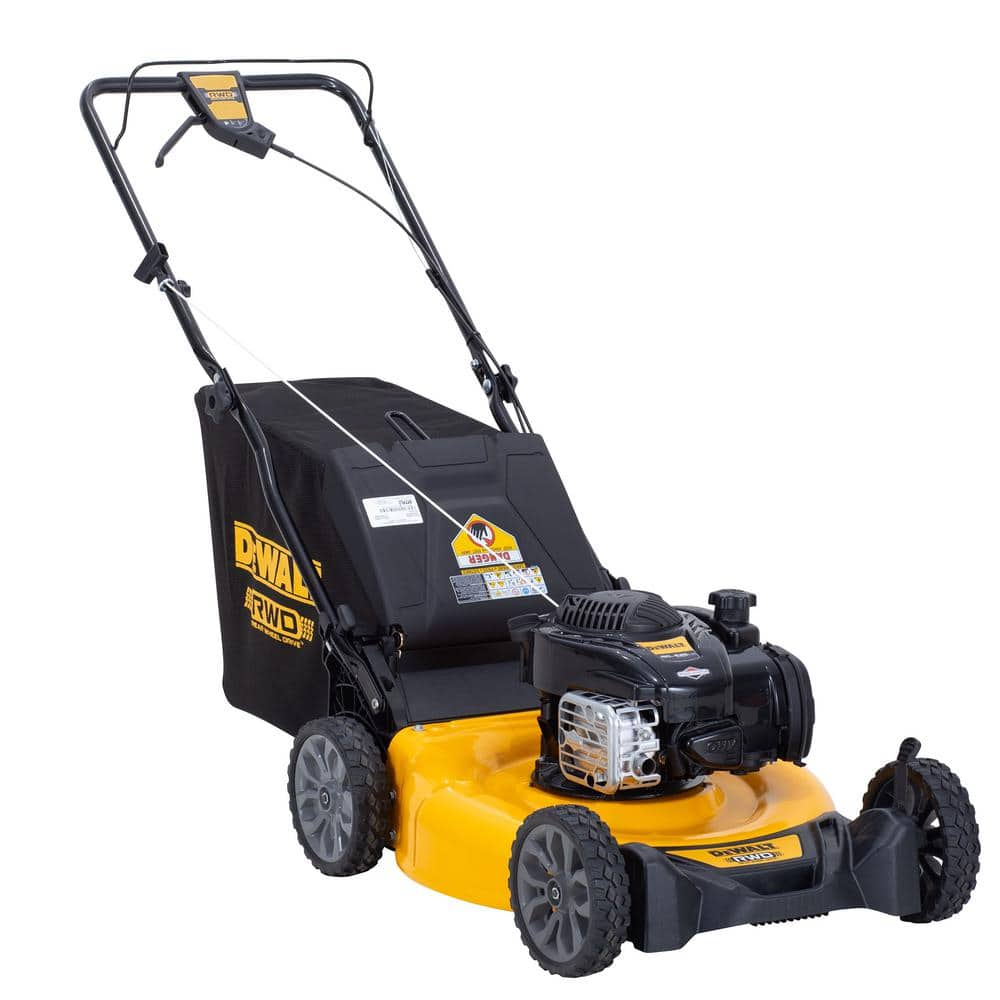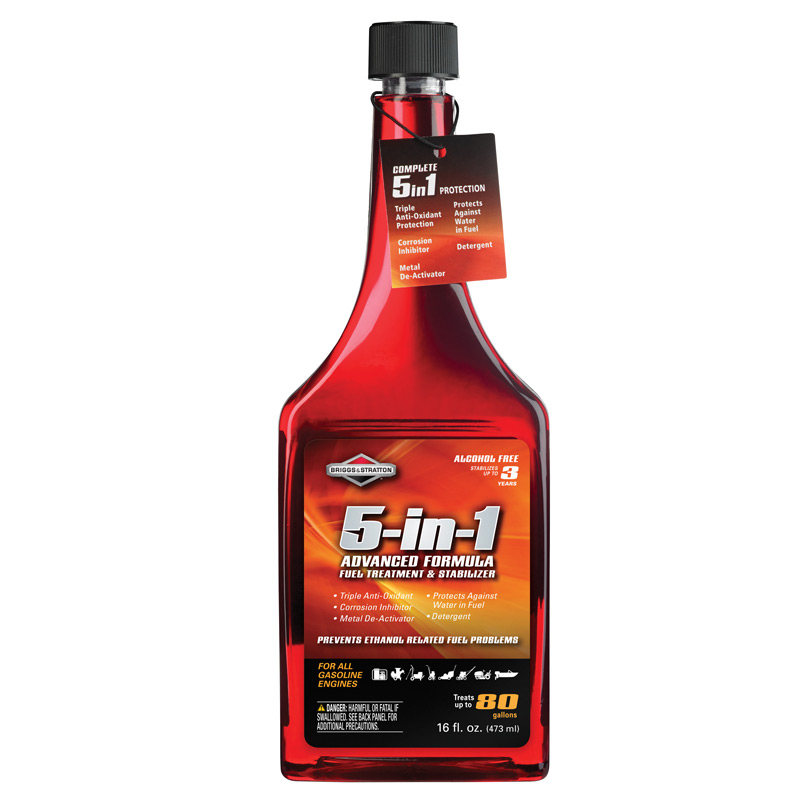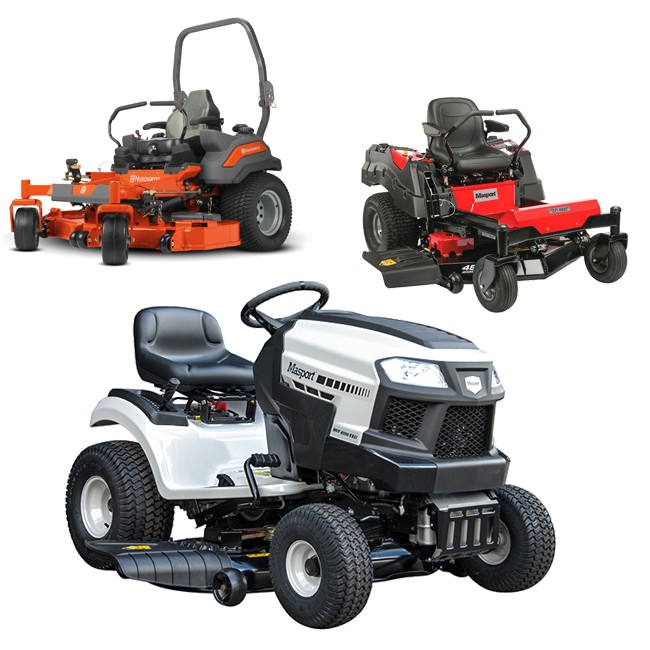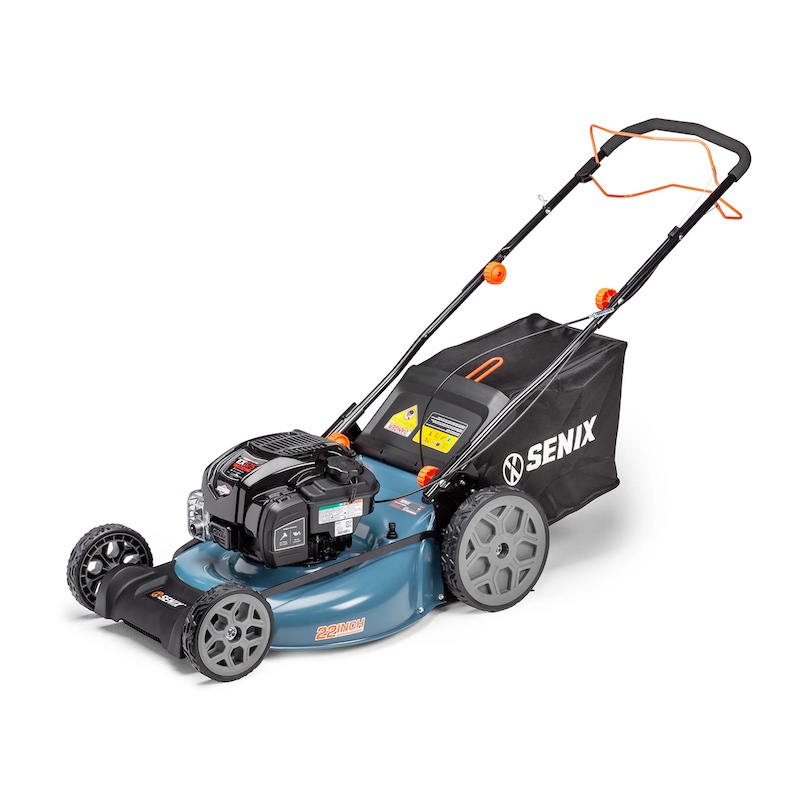
What Kind of Gas for Lawn Mower? Choosing the Right Gas
The Importance of Selecting the Correct Fuel Type
What kind of gas for lawn mower? Selecting the right fuel for your lawn mower is critical. A suitable fuel type enhances mower performance and extends its lifespan. Wrong choices can lead to costly repairs or decreased efficiency.
Recommended Octane Ratings for Lawn Mowers
For most lawn mowers, gasoline with an octane rating of 87 or higher is recommended. This level ensures efficient burning without damaging the engine. It’s advisable to always check your mower’s manual for specific recommendations.
The Effects of Using Low-Quality Gasoline
Using low-quality gasoline can seriously harm your lawn mower. Gasoline with an octane rating below 87 could lead to engine knocking and reduced efficiency. Furthermore, poor quality gas might void your mower’s warranty, leading to out-of-pocket expenses for repairs.
Understanding Ethanol Content in Gasoline
Ethanol content plays a crucial role in gasoline used for lawn mowers. Modern fuels often incorporate ethanol, a form of alcohol produced by fermenting and distilling starch crops like corn. While ethanol can help reduce emissions, its levels must be carefully managed in fuel for lawn mowers.
Risks of Higher Ethanol Levels in Lawn Mowers
High ethanol levels in gasoline can be detrimental to lawn mowers. Gasoline with more than 10% ethanol can cause several issues:
- Increased Wear and Tear: Ethanol can corrode metal parts and degrade rubber and plastic components in the mower.
- Moisture Accumulation: Ethanol tends to attract and absorb water from the air. This moisture can enter the fuel system, leading to rust and clogging.
- Engine Performance: High ethanol levels can make the engine run hotter, potentially overheating the mower and reducing its lifespan.
Using gasoline with high ethanol content in lawn mowers might also void the warranty, as it is considered improper use.
The Safe Ethanol Level and Octane Combination for Lawn Mowers
To ensure the safety and efficiency of your lawn mower, it is key to choose the correct ethanol and octane levels.
- Ethanol: The safest ethanol level for most lawn mowers is 10% or less (E10). Higher levels like E15 are not recommended and may harm the engine.
- Octane: An octane rating of 87 or higher is best for lawn mowers. This rating supports efficient fuel burning and minimizes the risk of engine damage.
Always consult your lawn mower’s manual to verify the recommended fuel specifications. Choosing the right combination will enhance performance and extend your mower’s life.
Seasonal Considerations for Lawn Mower Fuel
Proper fuel management aligns with seasonal use of your lawn mower. Recognizing seasonal fuel needs prevents common mishaps and prolongs your mower’s functionality.
Risks of Letting Gas Sit in the Mower
Leaving fuel in your mower over winter can cause significant issues. Hydrocarbons in the gasoline evaporate, leaving a harmful residue inside the engine. This residue can develop into varnish, which clogs the carburetor and fuel lines. Such blockages hinder the mower’s engine from operating effectively. Problems may appear when you start the mower after storage – difficulty starting or performing inadequately are common signs.
Precautions for Storing Gas in Lawn Mowers During Off-Season
To avoid the complications of stale gas, empty the mower’s tank at the end of mowing season or use a fuel stabilizer. Adding a stabilizer to the fuel can prevent the formation of varnish and keep the fuel fresh for about six months. Always store your mower in a cool, dry place to protect it from extreme temperatures and moisture. By adhering to these guidelines, you ensure a smoother start-up in spring and safeguard the mower’s longevity.
Practical Tips for Fuel Usage in Lawn Mowers
Proper fuel management in lawn mowers ensures optimal performance and longevity. Keeping track of the fuel you use and understanding how it affects your mower is essential. These practical tips will help you maintain the efficiency of your lawn mower.
Checking Compatibility with Manufacturer Recommendations
Always consult your lawn mower’s manual before choosing gas. It will list the best type of fuel and octane rating for your specific model. Using the recommended fuel type prevents potential damage and maintains the machine’s efficiency.
Regular Fuel Checks and Maintenance Tips
Regularly check the fuel quality in your lawn mower. Replace old or contaminated gas with fresh fuel to improve performance. Regular maintenance, like cleaning the fuel tank and replacing filters, also helps. This keeps your lawn mower running smoothly, avoiding unnecessary wear or damage.
Long-Term Impacts of Using Wrong Gas on Mowers
Choosing the wrong type of gas can seriously affect a lawn mower’s lifespan and performance. Using gas with incorrect octane levels or too much ethanol can have severe consequences.
Potential Damage to Engine Components
Using gas with low octane ratings or high ethanol content can lead to:
- Corrosion in the fuel system from ethanol which attracts moisture.
- Deposits on engine parts, resulting from the use of lower quality fuel.
- Wear in the carburetor, fuel lines, and engine from impure gas.
These issues may not appear immediately but can gradually develop, leading to costly engine repairs or the need for a new mower.
Implications for Mower Performance and Durability
The wrong gas affects a mower’s performance and durability in several ways:
- Engine Knocking and Misfires: Wrong octane may result in combustion problems.
- Loss of Power: This occurs when the engine cannot burn fuel efficiently due to impurities.
- Shortened Lifespan: Continuous use of unsuitable fuel can significantly reduce a lawn mower’s operational life.
To prevent these problems, always use the right type of gas as recommended by your lawn mower’s manufacturer. Regular maintenance and fuel checks can also ensure better mower performance and longevity.
Legal and Warranty Considerations
Navigating legal and warranty issues is key when choosing gas for your lawn mower.
Warranty Concerns with Wrong Fuel Usage
Using the wrong kind of gas can lead to big problems. It risks voiding your mower’s warranty. This means repairs or damage from the wrong gas come out of your pocket. Always follow your mower’s manual. It guides what kind of gas maintains the warranty. Pay close attention to approved fuel types and octane ratings.
Regulations on Gasoline Types by the U.S. Department of Energy
The U.S. Department of Energy sets rules on gas types. They do not approve fuels like E15 for small engines or old cars. These rules protect engines and ensure safe usage. For lawn mowers, use gasoline as per their regulations. This keeps your machine safe and compliant with legal standards. It is best to use E10 gasoline, which meets these guidelines and is safe for your mower.
Some Key Points for Your Lawn Mower
Type of Fuel: Most gasoline-powered lawn mowers require regular unleaded gasoline (87 octane). Always check your mower’s manual for specific recommendations.
- Freshness: Gasoline can go bad over time, especially if it contains ethanol. Old gas can cause engine problems. Try to use fresh fuel and avoid letting gas sit in the mower for more than a few months.
- Ethanol Content: Many gas stations sell fuel with up to 10% ethanol (E10), which is generally safe for most modern mowers. However, higher ethanol blends like E15 or E85 can damage small engines, so avoid these.
- Stabilizers: If you plan to store fuel for an extended period, consider adding a fuel stabilizer. This helps prevent the gasoline from breaking down and causing issues when you’re ready to use the mower again.
- Proper Storage: Store gasoline in an approved, well-ventilated container away from heat sources and out of reach of children and pets.
- Mixing Oil (for Two-Stroke Engines): If your mower has a two-stroke engine, you’ll need to mix oil with the gasoline. Follow the manufacturer’s instructions for the correct oil-to-gas ratio, typically around 50:1 or 40:1.
- Check the Tank: Before refueling, make sure the mower is turned off and the engine has cooled down. Avoid overfilling the tank, as this can lead to spills or fuel entering the air filter.
- Draining Fuel (Seasonal Maintenance): At the end of the mowing season, it’s a good idea to either run the mower until it’s out of fuel or drain the gas tank to prevent buildup and clogs.
By following these guidelines, you can help ensure your lawn mower runs smoothly and efficiently.
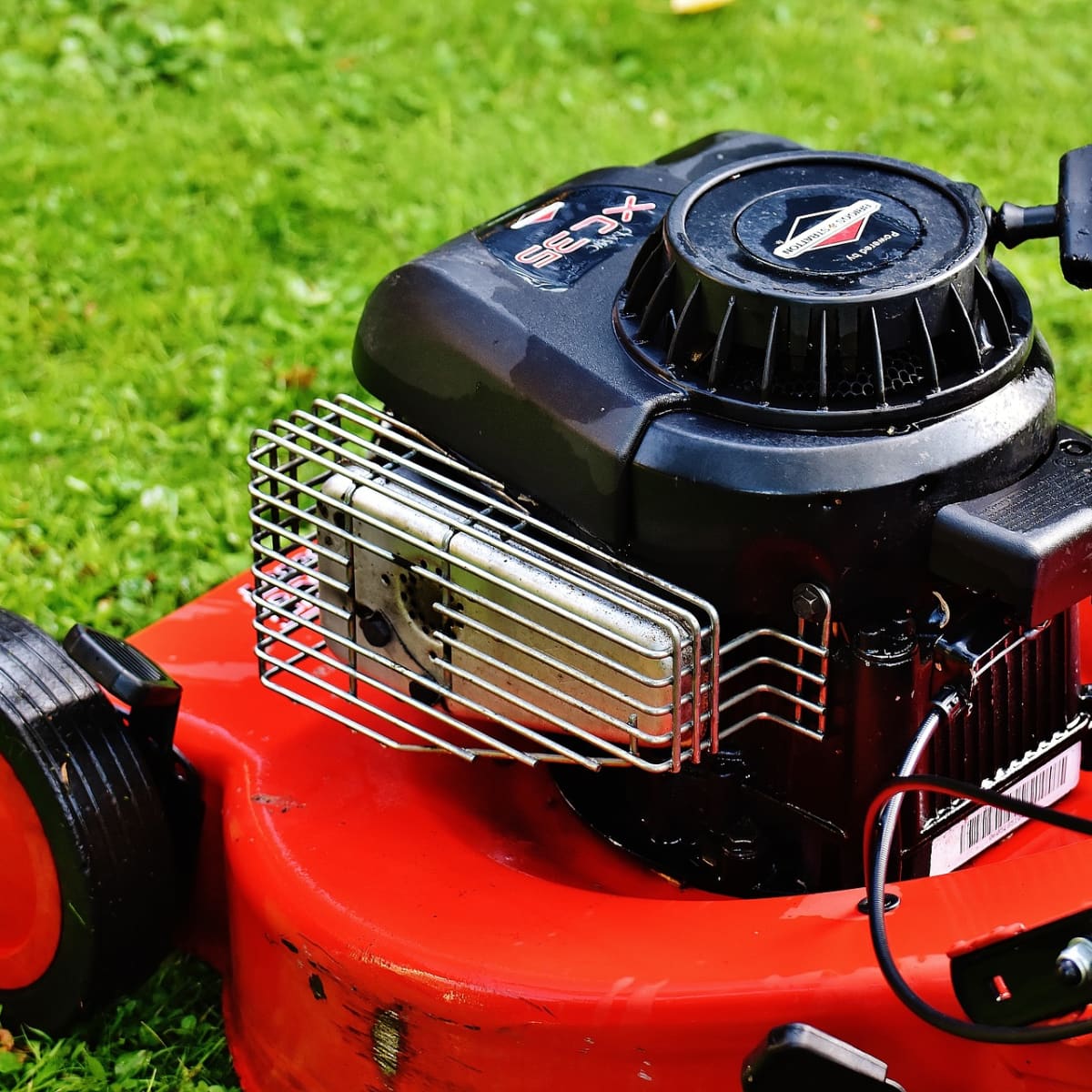
Easy Fixes for a Stubborn Lawn Mower
Check for Fresh Fuel and Fuel Tank Issues
Why won’t my lawn mower start? A common problem that may cause your lawn mower not to start is related to fuel issues. The quality and freshness of the fuel in your lawn mower are crucial for it to run smoothly. If you’re facing start-up issues after a period of non-use, particularly over winter or long breaks, the fuel might have deteriorated or become contaminated.
Drain Old or Contaminated Gas
Begin by checking if the gas in the tank is old or dirty. If the fuel has been sitting for over a month, it’s likely not good anymore. Drain this undesirable fuel out of the tank safely. Use a clean container to catch the gas as it drains.
Dispose of Old Gas Properly
After draining old or contaminated gas, do not just throw it away. Disposing of gas improperly can harm the environment. Take the old fuel to a proper disposal facility or a local auto shop that accepts it. Handling disposal correctly is essential.
Use a Fuel Stabilizer
Once you refill the tank with fresh gas, consider adding a fuel stabilizer, especially if you do not expect to use the mower frequently. Fuel stabilizers can prolong the life of the gas by preventing decay. This is a simple step that can save you from future start-up problems.
Clean and Unclog the Mower Deck
A clean mower deck is crucial for a smooth-running lawn mower. Clippings and debris can block movement and cause issues.
Remove Grass Clippings and Debris
Over time, your mower deck can gather clippings, dirt, and debris. This build-up can prevent the blades from turning and restrict the mower’s performance. After each use, turn off your mower and disconnect the spark plug for safety. Clear any loose debris from the top of the deck. Then, carefully tilt the mower to one side and scrape away clumped grass from underneath using a suitable tool like a putty knife or a wire brush.
Remember to spray the deck with water from time to time, to help loosen and remove stuck-on grass. Avoid using a pressure washer as it can force water into bearings and other sensitive areas.
Ensure Blade and Deck are Unrestricted
With a clean deck, check that the mower blade spins freely. If it’s still jammed, check for any obstructions in the blade area or deck. Remove any entangled objects, such as stones, twigs, or toys, that might have been picked up during mowing.
Inspect the blade for damage or dullness. A damaged blade can affect the mower’s efficiency and should be replaced. If the blade is merely dull, you can have it sharpened. Ensuring that your blade and deck are clear and unrestricted not only helps your mower start but also guarantees a cleaner cut for your lawn.
Regular maintenance of your mower deck can prevent many starting problems attributed to the ‘why won’t my lawn mower start’ question. A clear, clean, and undamaged deck is essential for optimum performance and longevity of your lawn mower.
Air Filter Maintenance
Regular air filter maintenance is key to solving the conundrum of ‘why won’t my lawn mower start.’ A choked air filter restricts airflow, which is vital for the engine to run. If your air filter is dirty or clogged, your lawn mower may struggle to start, stall, or perform poorly.
Replace or Clean Paper Filters
First, identify the type of air filter your lawn mower uses. Paper filters are common and need replacement when dirty. Locate your mower’s air filter housing; usually, it is a simple case that you can open by hand, or with screws. Remove the filter and hold it up to the light. If light doesn’t pass through, replace the filter with a new one that matches your mower’s model.
Wash and Oil Foam Filters
If your mower has a foam air filter, cleaning rather than replacing might be the solution. To clean, remove the filter and wash it in a mix of hot water and mild detergent. Rinse it thoroughly until the water runs clear. After it dries, lightly grease it with fresh engine oil, ensuring it’s not dripping. Squeeze out any excess oil, then place the foam filter back in its housing.
Perform air filter maintenance routinely. Do it every 25 hours of operation or at the start of each mowing season. This practice helps prevent problems with your mower not starting and extends the life of the engine.
Inspect the Spark Plug
The spark plug is vital for starting your lawn mower. It ignites the fuel to power the engine. If your lawn mower won’t start, checking the spark plug should be on your list.
Clean or Replace as Necessary
Begin by locating the spark plug on your mower. Disconnect the spark plug wire to safely inspect it. If you see buildup or wear, it may need cleaning or replacing. Use brake cleaner to remove debris from the plug. A wire brush can help to gently clean off tough deposits. If cleaning doesn’t solve the issue, you may need a new spark plug. Choose one that matches your mower’s specifications.
Check for Proper Connection
After either cleaning or replacing the spark plug, reconnect it properly. Ensure the spark plug wire is securely attached. A loose connection can prevent your lawn mower from starting. If you’ve followed these steps and the mower still won’t start, the issue may lie elsewhere. Continue troubleshooting other potential causes in your lawn mower’s starting system.
Examine the Fuel Filter and Fuel Line
The health of your fuel filter and fuel line directly affects your lawn mower’s performance. A clogged fuel filter or a kinked fuel line can stop gas from reaching the engine, preventing your mower from starting.
Ensure Gas Flows Freely to the Engine
First, inspect the fuel line for any blockages or leaks. Look for crimps or damages that could restrict fuel flow. To test, remove the fuel line at the carburetor end. Gas should flow out smoothly. If it doesn’t, it could mean there’s a blockage. Also, check that the fuel shutoff valve is open if your mower has one. An open valve ensures that fuel can flow into the engine.
Replace Clogged Fuel Filters
If testing shows restricted flow, your fuel filter may be clogged. Removing the filter is straightforward. Once removed, consider if it is beyond cleaning. If it looks very dirty, replace it with a new one that fits your mower model. Replacing a clogged fuel filter can solve the ‘why won’t my lawn mower start’ issue and enhance engine performance. Always follow the manufacturer’s guidelines when replacing fuel filters to ensure correct fit and function.
Regular inspection and maintenance of the fuel filter and line can prevent starting issues and ensure your lawn mower runs smoothly every time you need it.
Troubleshoot the Fuel Cap Vent
A vent issue with your lawn mower’s fuel cap can hinder its ability to start. The vent lets air into the fuel tank. This helps regulate pressure and promotes a smooth fuel flow. If it’s blocked, pressure can build up. This stops fuel from reaching the engine properly.
Look for Signs of Pressure Build-Up
When checking your lawn mower for starting issues, don’t overlook the fuel cap vent. Signs include the mower starting initially but then suddenly stopping. You might hear the engine sputter before it shuts down. These could indicate pressure problems linked to the vent.
Replace the Fuel Cap if Necessary
If you confirm the vent is blocked, try cleaning it first. Often, clearing debris can resolve the issue. If cleaning doesn’t help, or the cap is damaged, it’s best to replace it. A new fuel cap can restore proper air flow. It helps keep your mower running smoothly.
Check the Safety Release Mechanism
While maintaining your lawn mower, don’t overlook the safety release mechanism. This feature, often referred to as a ‘dead man’s control,’ is crucial for safe operation. It requires the operator to actively engage a control bar or button, ensuring the engine runs only when intended. This prevents accidental starts or uncontrolled operation of the mower.
Adjust or Replace the Safety Control Cable
The control cable connected to this mechanism can sometimes prevent your lawn mower from starting if it’s damaged or misadjusted. First, inspect the cable for any signs of wear or damage. If you find issues like fraying or sticking, replacing the cable is necessary. Adjustments can sometimes be as simple as tightening a loose connection, but make sure there is smooth movement without binding. A correctly functioning cable ensures the safety mechanism engages and disengages properly, aiding in the successful start and operation of your lawn mower.
Evaluate the Flywheel System
When your lawn mower won’t start, the flywheel system may be to blame. This system helps your mower’s engine work smoothly. If it’s off, your mower might not start or might start and then stall. Here’s what to do.
Align and Check the Brake Pad Contact
First, check if the flywheel brake is engaged properly. The brake pad must contact the flywheel fully. If not, the starting cord could be hard to pull. Make sure nothing is jamming the blade. This lets the control lever move freely.
Consider Flywheel Key Issues
Next, think about the flywheel key. It’s a small, but key part of the mower. If your mower hits something, this key can break. A broken key can make your mower run rough or not start. If you suspect key issues, you might need to take your mower apart to check. If the key is damaged, replace it to fix the start-up problem.
Fixing flywheel system issues can be tricky. If you’re not sure, ask a pro for help. Remember to keep your mower clear of objects that can cause damage.
Investigate Less Common Starting Issues
When your lawn mower won’t start, look beyond the obvious fixes. Less common issues sometimes cause trouble.
Ignition Switch Problems
The ignition switch might be faulty. If it doesn’t make proper contact, the mower won’t start. Check if the switch is damaged or loose. Try toggling it to see if there’s any response. Replace a defective switch.
Presence of Water in the Fuel Line
Water in the fuel line hinders the engine’s ability to start. Drain the fuel system to remove water. Dry it out before adding fresh fuel. Be sure to check if water is a repeat issue.
Adjust the Engine Choke Properly
An improperly set choke affects the fuel-air mix, causing start problems. Refer to your owner’s manual to set the choke right. If unsure, get professional help to adjust it.
Check and Change the Oil
Old or low oil levels can cause serious engine issues. Check the oil level. If low, top it off. If the oil’s dirty or thick, change it. Regular oil checks are a must for a smooth-running mower.
Recognize When to Call a Professional
Sometimes a lawn mower problem is too complex for a typical fix at home. It’s wise to know when to call a pro. Expert help can solve issues that are beyond basic troubleshooting. Seeking professional assistance can save time and prevent further damage to your mower. Here are some signs that indicate serious engine trouble and when DIY fixes won’t cut it.
Understand Signs of Serious Engine Trouble
If you notice black smoke or any knocking sounds, it’s serious. A mower engine that uses too much oil or gas is another bad sign. If your mower makes strange noises or shakes a lot, that’s worrisome. These symptoms often suggest internal problems that require a technician’s touch. Ignoring them could lead to more damage and higher repair costs.
Know When DIY Fixes Aren’t Enough
After trying all the fixes like checking the spark plug, air filter, and fuel system, consider if you still can’t get your lawn mower to start. It might be time to call for help. Experts have the right tools to diagnose hidden problems. They can sort issues that are tough to fix on your own. If your mower is still not starting, or if it’s behaving oddly after your attempts to fix it, it’s smart to reach out to a professional lawn mower repair service. They can ensure your mower is safe to use and performs at its best.
